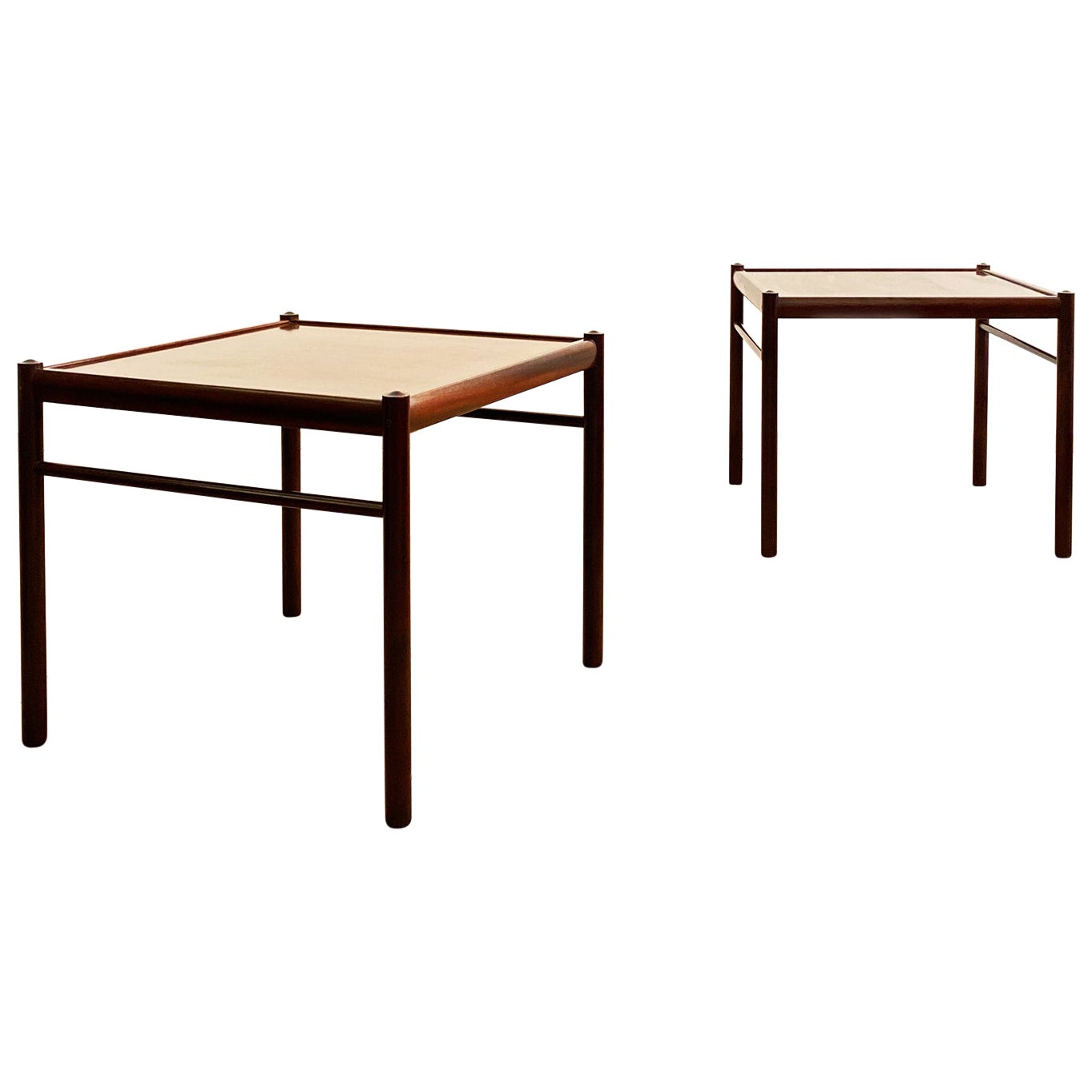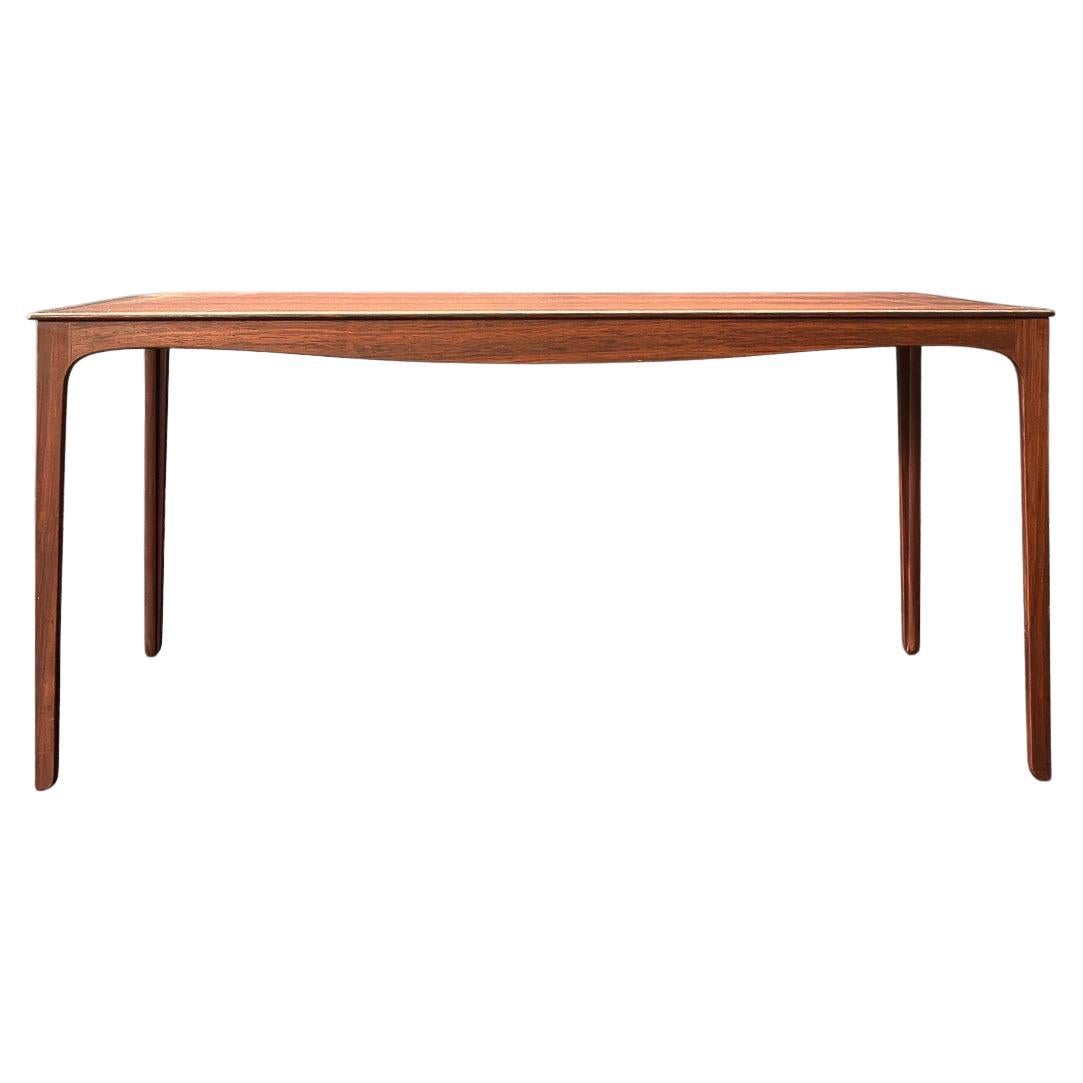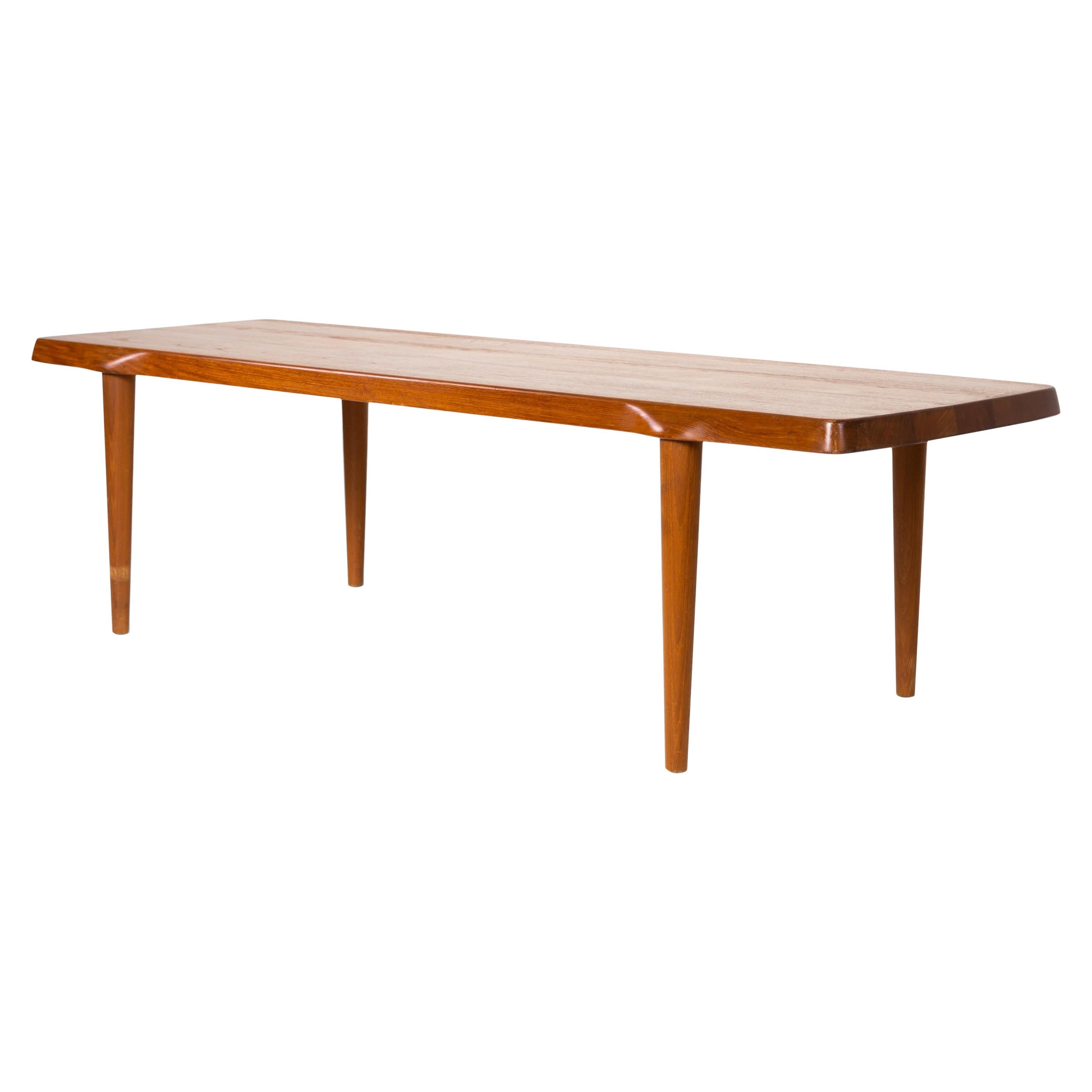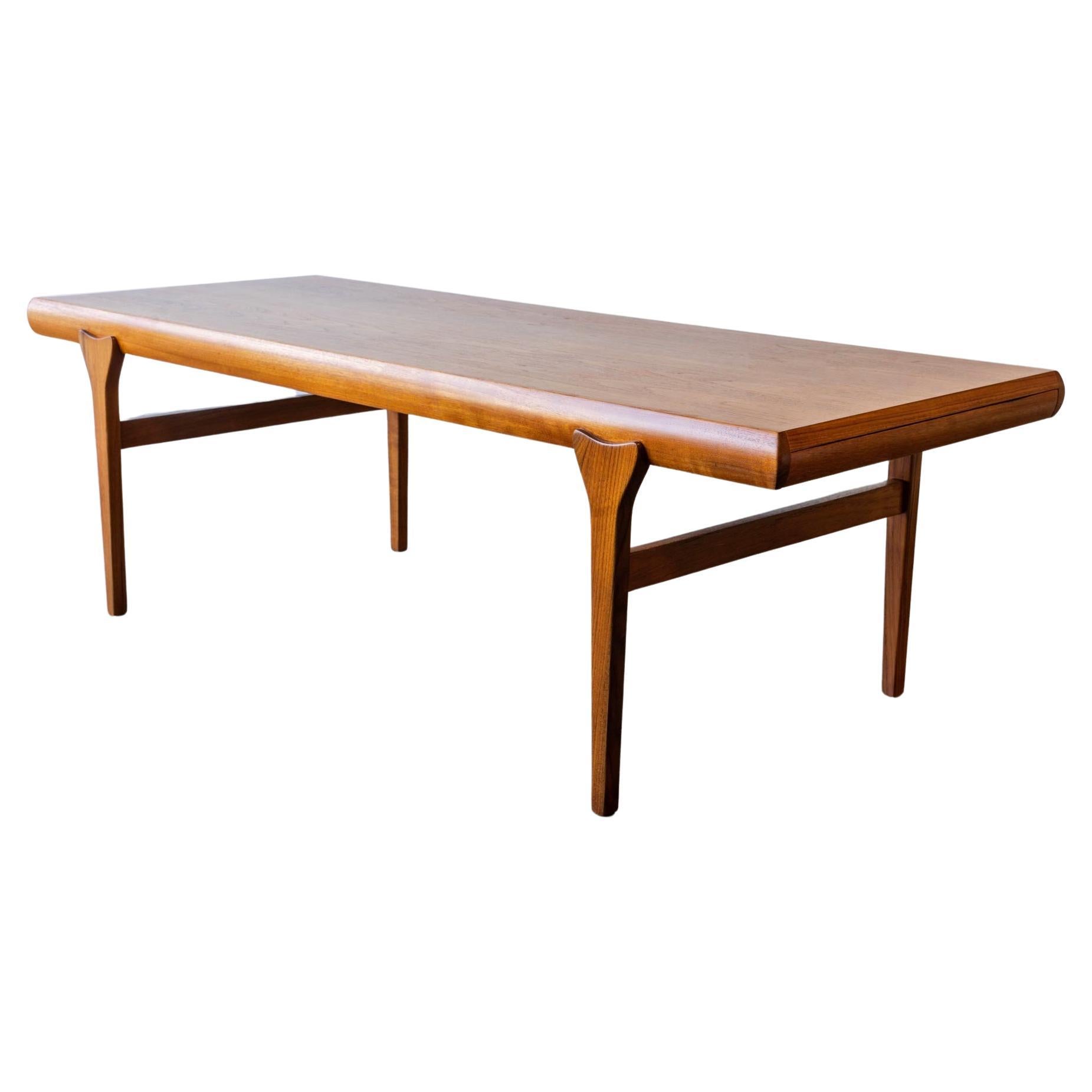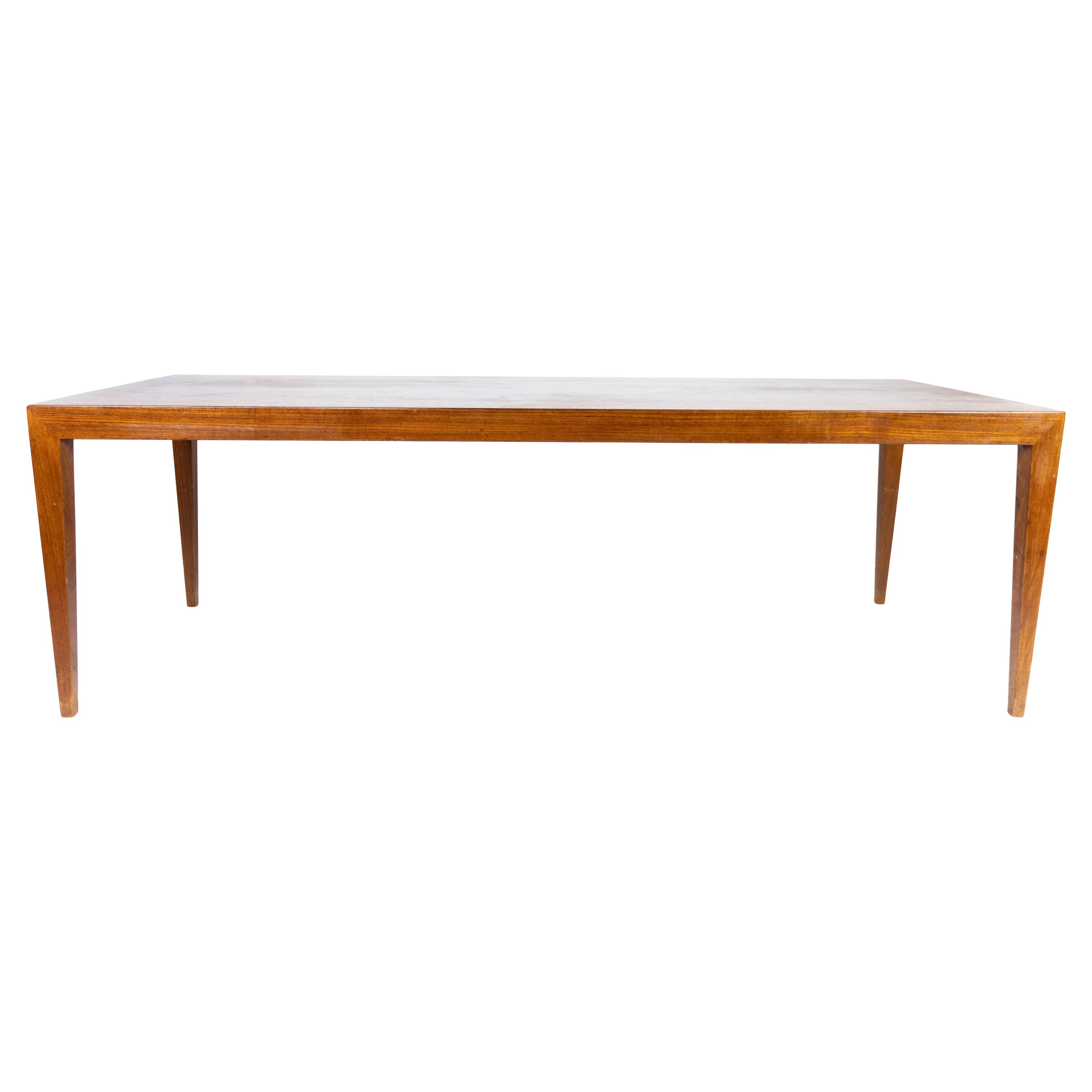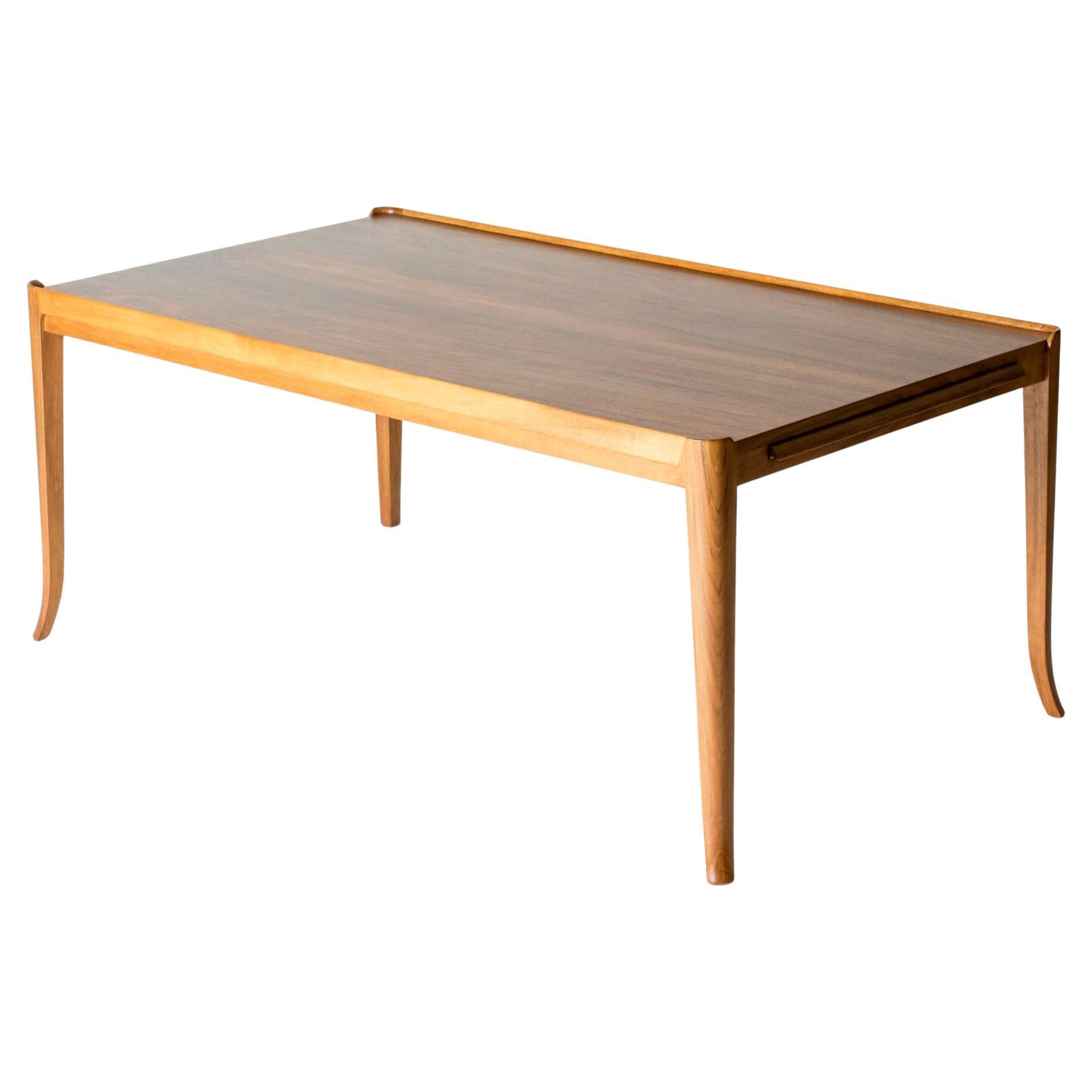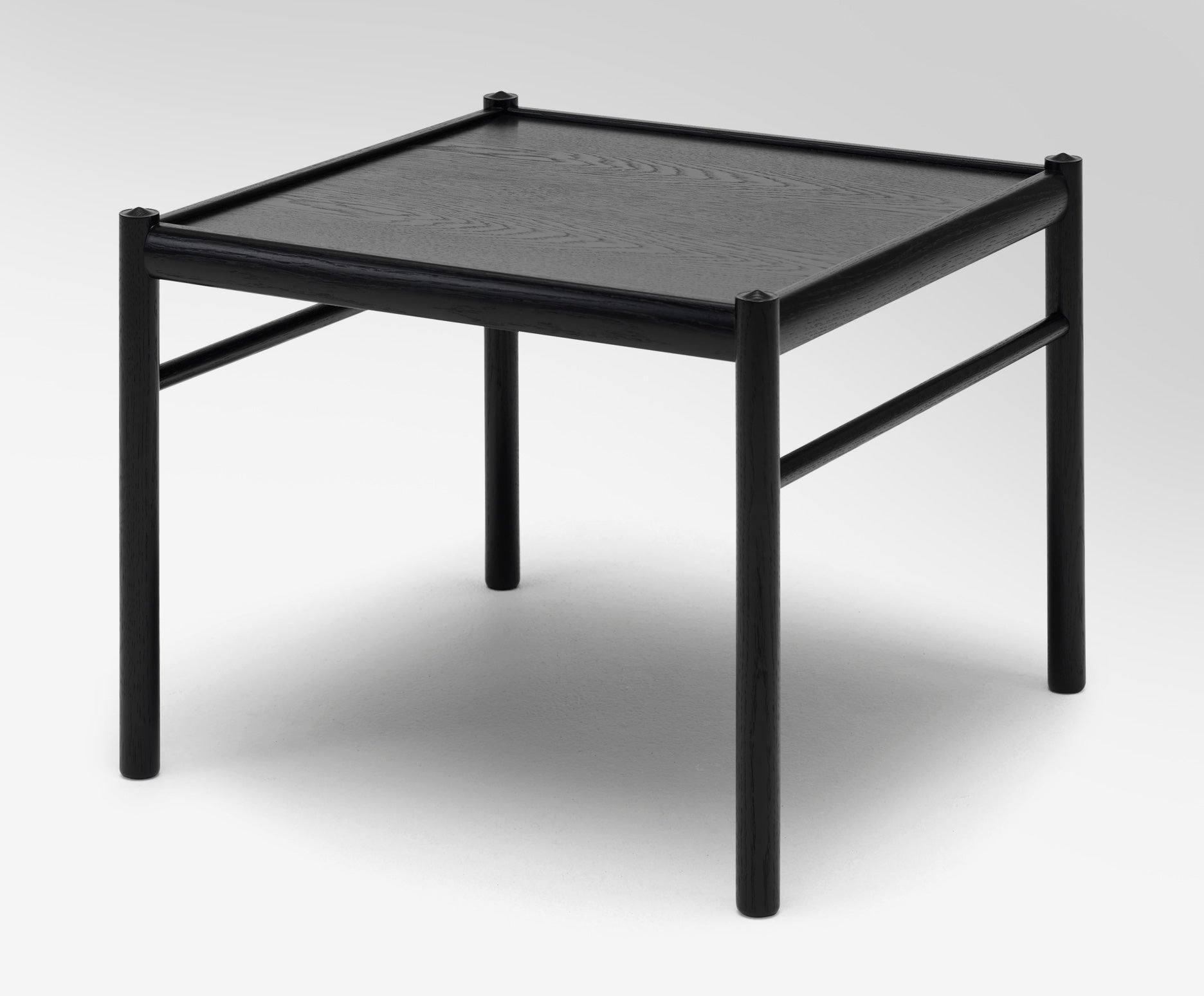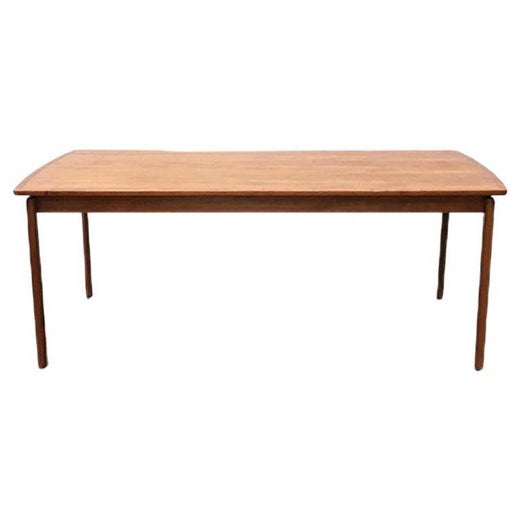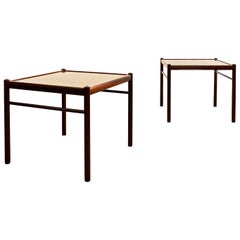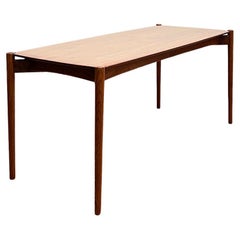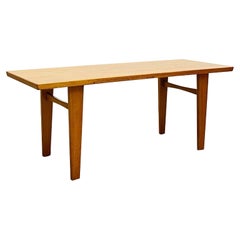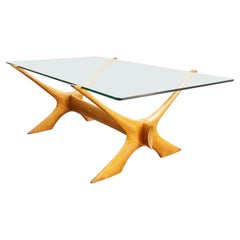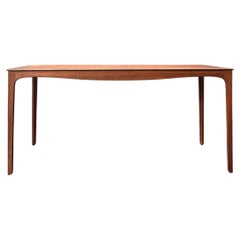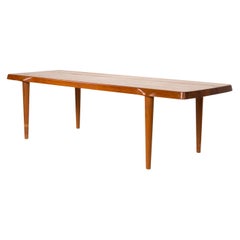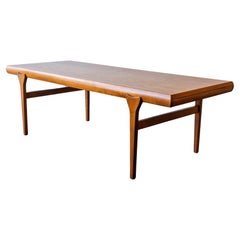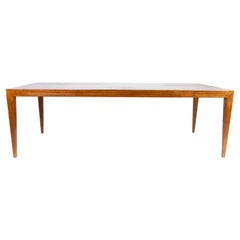Mid-Century Coffee or Sofa Table, Colonial Series, Ole Wanscher, Denmark, 1950s
About the Item
- Creator:Ole Wanscher (Designer),Poul Jeppesen (Manufacturer)
- Design:Colonial Coffee TableColonial Series
- Dimensions:Height: 20.48 in (52 cm)Width: 46.46 in (118 cm)Depth: 23.63 in (60 cm)
- Style:Mid-Century Modern (Of the Period)
- Materials and Techniques:
- Place of Origin:
- Period:
- Date of Manufacture:Unknown
- Condition:Wear consistent with age and use. Minor fading.
- Seller Location:München, DE
- Reference Number:1stDibs: LU5971227039012
Colonial Coffee Table
With its clean lines and elegant shape, the Colonial coffee table is a quietly striking work from a master of Danish design. While Scandinavian modernism’s household names aren’t likely to include Copenhagen native Ole Wanscher (1903–85), his legacy as a designer, author and educator is integral to the field, and his postwar furniture — such as this classic table — is internationally beloved.
Wanscher studied under pioneering modernist Kaare Klint at the Royal Danish Academy of Fine Arts and worked for him before opening his own firm. In 1954, Wanscher took over Klint’s position as head of the school’s furniture department after his former teacher’s passing. Owing to copious travel and his art historian father’s influence, Wanscher studied and grew to admire furniture traditions in Egypt, Greece and elsewhere. He wrote about furniture history and incorporated this research into his own designs. Wanscher also learned a lot from Klint, who introduced him to 18th-century British cabinetry, the classical forms of which influenced his Colonial coffee table.
Wanscher was a perfectionist who constantly refined his work rather than introducing new pieces every year like his prolific peers did. Danish manufacturer P. Jeppesens debuted the Colonial series, which included Wanscher’s famed easy chair, in 1949 and the Colonial coffee table in 1964. The table was reissued in 2015 by Carl Hansen & Søn, where it is available in oak and walnut with a matching veneer top. A simple design that is understated from a distance but complex in its modern geometric appearance, the Colonial coffee table is marked by its maker’s meticulousness. Its square tabletop rests on a slender frame with an unexpected relief detail on the corners, proving that design doesn’t have to be loud to be adventurous.
Ole Wanscher
A scholar and architect with the heart of an artist, Ole Wanscher helped define the functional, clean-cut style that formed the core of modern Danish furniture design. Influenced heavily by his world travels, Wanscher gained inspiration from English, Asian, Egyptian and traditional Shaker furniture, and he incorporated elements from these styles into his revered mid-century designs.
Wanscher’s deep respect for the use of traditional materials such as quality wood is reflected in his work, which is valued for being both beautiful and built to last. He was also a leader in the postwar “design for everyone” movement, creating many pieces intended for everyday life within the small confines of the average Danish household. Later, Wanscher became a prolific writer on the subject of furniture design. He is considered one of the most significant influences on the world of Scandinavian modernism.
The son of an art historian and a painter, Wanscher studied at the Royal Danish Academy of Fine Arts. From 1925 to 1927, Wanscher worked under the great Danish designer and professor Kaare Klint, who became one of the greatest stylistic influences on his output. Wanscher would go on to work as a professor at the academy from 1955 to 1973.
Wanscher founded his own furniture manufacturing company in 1929. Here he employed the top cabinetmakers of the day, most notably A.J. Iversen, with whom Wanscher collaborated for many years. While the workshop produced seductive handmade furniture with organic materials such as teak and mahogany, Wanscher intended to design durable seating, tables and more for the mass market — he was committed to making quality furniture available to a wider audience.
Of all of Wanscher’s designs, he is perhaps best known for his Colonial chair. This piece — which is part of a collection for Danish manufacturer P. Jeppesens that includes a sofa and a coffee table — exemplifies his penchant for combining minimalist design with traditional craftsmanship. Wanscher’s dining room tables, such as the Rungstedlund table, also epitomize the elegance of his work’s simple silhouettes and careful construction. These sleek tables serve as an ideal centerpiece for both modern and traditionally styled dining rooms, highlighting the versatility of Wanscher’s work.
Wanscher received a gold medal for his exemplary work at the 1960 Milan Triennale. He also received the Copenhagen Carpenters’ Guild Annual Award. Though Wanscher passed away in 1985, his iconic designs and scholarly writings remain relevant to this day.
Find vintage Ole Wanscher tables, seating and case pieces on 1stDibs.
- ShippingRetrieving quote...Shipping from: München, Germany
- Return Policy
More From This Seller
View AllVintage 1950s Danish Mid-Century Modern Coffee and Cocktail Tables
Mahogany
Vintage 1950s German Mid-Century Modern Coffee and Cocktail Tables
Teak
Vintage 1960s German Mid-Century Modern Coffee and Cocktail Tables
Teak, Laminate
Vintage 1950s Danish Mid-Century Modern Dining Room Tables
Glass, Mahogany
Vintage 1960s Danish Mid-Century Modern Dining Room Tables
Oak
Vintage 1950s Danish Mid-Century Modern Dining Room Tables
Teak
You May Also Like
Vintage 1950s Danish Mid-Century Modern Coffee and Cocktail Tables
Wood
Mid-20th Century Danish Mid-Century Modern Coffee and Cocktail Tables
Wood
Vintage 1960s Mid-Century Modern Coffee and Cocktail Tables
Teak
Vintage 1960s Danish Mid-Century Modern Coffee and Cocktail Tables
Teak
Vintage 1940s Swedish Scandinavian Modern Coffee and Cocktail Tables
Mahogany
Vintage 1960s Danish Scandinavian Modern Coffee and Cocktail Tables
Teak
